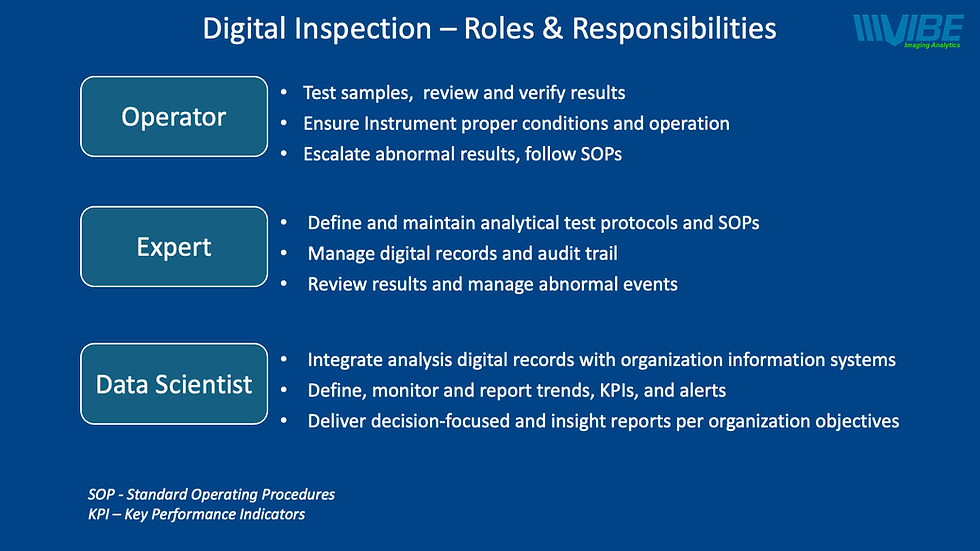Can We Detect Fusarium In Wheat ?
- "The Grain Guru"
- Aug 12, 2020
- 3 min read
Updated: May 11, 2022

Over the last few years, the reaction to our statements that we can detect Fusarium in Wheat using image analysis was very skeptical, and yes it was not personal but more of the agriculture ecosystem opinion on the Silicon Valley "FAKE IT UNTIL YOU MAKE IT" culture. And we got it.
Happy to share that nowadays, customers are using the Vibe QM3 Grain Analyzer with the "Fusarium Test Calibration" that we developed to test and detect Fusarium in Wheat, a sample of 25 grams takes less than 30 seconds. Most important, using digital inspection reduce the exposure of the people who do it manually. Typical time of manual inspection per sample ranges from 15 to 30 minutes, one inspector can do 40 samples a day with an error rate of about 10% to 20% where with Vibe you can do 400 samples with 99% accuracy on a sample level. We plan to deploy this solution on a much larger scale to ensure safer food for humans and animals feed.
The image of the poster abstract below is from 2019 National Fusarium Head Blight Forum ;
Special thank you to the authors for mentioning the uses of Vibe in this paper.
Link to 2019 National Fusarium Head Blight Forum:

Abstract Text
Variety Development & Host Plant Resistance
MACHINE LEARNING MODELS FOR PREDICTING DEOXYNIVALENOL CONCENTRATION FROM GRAIN IMAGING DATA Brian P. Ward1*, Gina Brown-Guedira1, Christina Cowger1, David Marshall1 and Yanhong Dong2 1USDA Agricultural Research Service, Plant Science Research Unit, Raleigh, NC 27695; and
2Dept. of Plant Pathology, University of Minnesota, Minnesota, WI 55108 *Corresponding Author: PH: 919-513-7926; Email: brian.ward2@usda.gov
ABSTRACT Resistance to Fusarium head blight (FHB) is a critical trait in many wheat growing regions. However, accurate quantification of FHB resistance is difficult to obtain. Measurement of grain deoxynivalenol (DON) content is quantitative and objective, but expensive and time-consuming. Visual counts of Fusarium-damaged kernels are generally highly correlated with DON levels, but data on this trait is subjective and laborious to collect. Grain imaging data presents an attractive alternative to both of these measurements, if it can be used to generate accurate predictions of DON concentrations. We tested 103 doubled-haploid lines from biparental population Catawba × NC12-22844, grown in headrows with two replications in Raleigh, NC during the 2018-2019 winter wheat growing season. All headrows were rated for heading date (HD), FHB incidence (INC) and severity (SEV). DON concentrations of milled grain samples were assessed at the University of Minnesota. Approximately 15mL of threshed seed from each headrow was imaged on a Vibe QM3 grain analyzer. Color data (lightness, hue, and chromaticity) and grain dimension data (pixels/grain, grain length, and grain width) were averaged across all grains for each sample. Multiple linear regression (MLR) and nonlinear random forest regression (RFR) models were used to generate predictions for grain DON content. 50 repetitions of 5-fold cross-validation were performed to assess model generalization ability and overfitting. DON heritability was 0.72, while heritabilities for field-collected data ranged from 0.51 for SEV to 0.97 for HD. Heritabilities for imager-collected data ranged from 0.81 for lightness to 0.96 for grain length. A MLR model fit with HD, INC, and SEV as predictors had a coefficient of determination (R2) of 0.63. The root mean square error (RMSE) of this model in cross-validation was 4.56 parts per million (ppm) DON. The RFR model generated using the same predictors had a R2 value of 0.55, and a RMSE of 4.7 ppm DON. A MLR model fit using heading date and imaging data as predictors exhibited a R2 value of 0.55, and a RMSE of 5.17 ppm DON. Finally, a RFR model fit using the same predictors exhibited a R2 value of 0.78, and a RMSE of 5.0 ppm DON. These results suggest that grain imaging data can come close to reproducing the accuracy of DON predictions generated using field-collected FHB trait data. The slightly better performance of the RFR model using imaging data suggests the presence of some non-linear relationships between imaging traits and grain DON concentration
ACKNOWLEDGEMENT AND DISCLAIMER This material is based upon work supported by the U.S. Department of Agriculture, under Agreement No. 59-0206-7-009. This is a cooperative project with the U.S. Wheat & Barley Scab Initiative. Any opinions, findings, conclusions, or recommendations expressed in this publication are those of the author(s) and do not necessarily reflect the view of the U.S. Department of Agriculture. 124 National Fusarium Head Blight Forum • December 2019




Comments